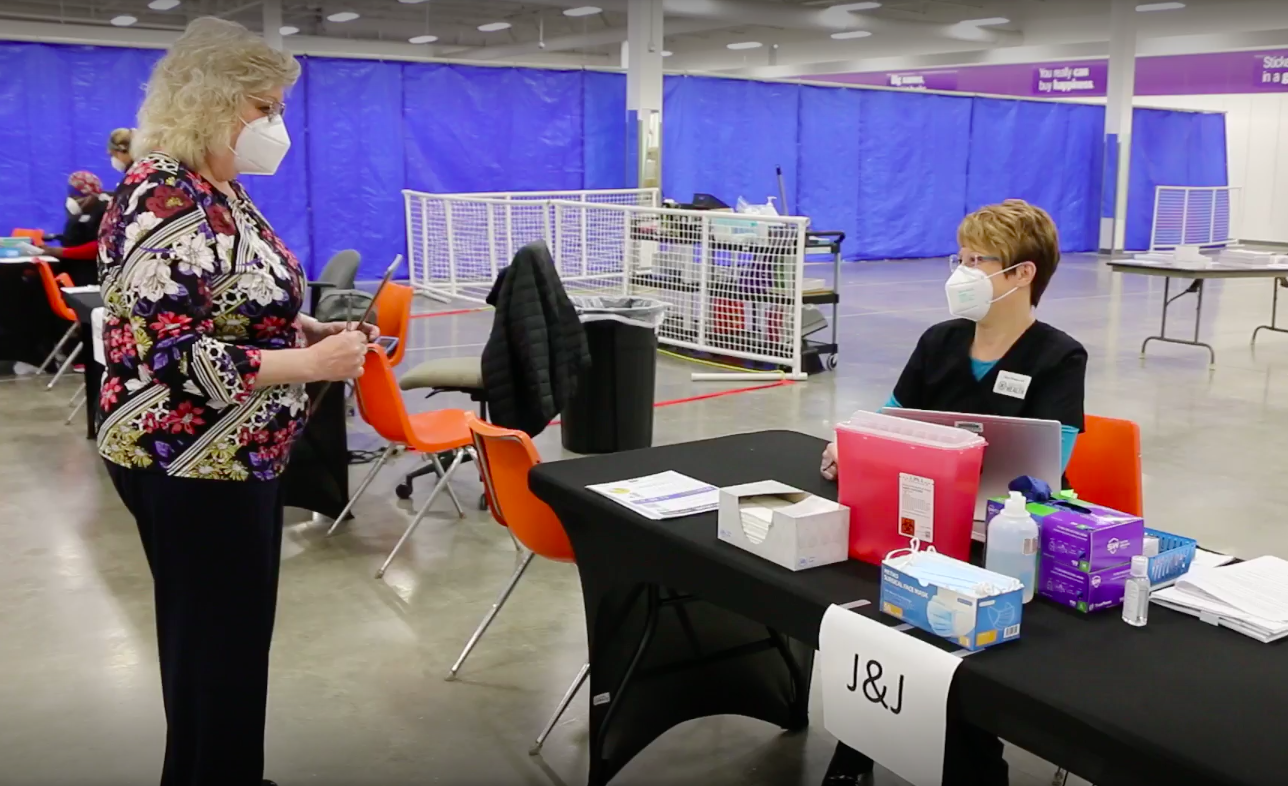Why care?
CoxHealth in Springfield has declined to provide media access to its COVID-19 unit, citing safety and privacy concerns. But they provided the Hauxeda with a rare opportunity to interview two critical care charge nurses who have been on the front lines of the pandemic response. They told a story few in the community have asked them to share.
Unless he’s in a lead role that day or has signed up for an overtime shift — something he often does — CoxHealth critical care nurse Camron Dykes won’t know which patients he will care for until he arrives at work.
No matter where in the Cox South Hospital his shift will take place, he knows that he will put his education and experience to work in providing care for ailing and recovering patients in need. But he has learned during the course of the pandemic that the shift will be magnitudes different if it takes place in the COVID-19 intensive care unit.
“I drive to work sometimes in silence just to get ready for whatever it is that I’m going to have to do or see or say,” he said.
Once he discovers that he will spend his shift in the COVID-19 unit, Dykes said, he takes a deep breath.
“You just kind of go do it,” Dykes said. “I try not to think about it too much because then I'm like, ‘Well, this is miserable.’”
Nurses learn early on in their careers that some of the patients in their care will not recover. COVID-19 skewed those numbers past the point of recognition, said Dykes and Ivy Garcia, a friend and nursing colleague in the CoxHealth ICU.
The past two years have shifted their careers — and their view of the community — in troubling directions. Their time in the COVID unit is exhausting physically and emotionally, offering few opportunities to catch their own breaths. Even when they help save a patient's life, they know that person likely will be tethered to an oxygen tank or see their quality of life decline. And, outside the hospital, they find a community that lacks the sense of urgency about the pandemic that the nursing colleagues feel every shift they spend inside.

‘The whole world changed'
Garcia said she recognized from the outset of the pandemic that treating people who had fallen ill from the virus would be different than anything she’d experienced since she started her ICU work in 2016. Before COVID-19, the worst weekend she had experienced as a nurse was one in which three of her patients died over her weekend shifts.
“Now my worst COVID shift is six in 12 hours that have passed away,” she said.
Dykes, with only about nine months of on-the-job experience as a critical care RN before the pandemic, was still learning how best to do his job. But in that time, he had personally experienced that most patients in intensive care eventually got better.
“And then the whole world changed, you know,” he said. “I think where we work, we see the sickest of the sick and so that kind of skews your perspective a little bit, but it's still very difficult to go from feeling like you could help an enormous amount of people that were critically ill to transitioning to this period where you know, despite all the wonders of modern medicine, you're kind of limited because of this novel situation. It's just very difficult to see and to exhaust all of these efforts, and then continue to watch people suffer.”

While Garcia had more ICU experience than Dykes prior to the pandemic, the before-after contrast was just as stark for her.
“The acuity wasn't like this all of the time,” Garcia said. “So we would have a weekend where I had a really sick patient, but there were also a lot of weekends where we had patients that got better.”
Early in the pandemic, Garcia spent a short stint in the CoxHealth cardiac catheterization lab, a place where patients receive emergency interventions for heart failures, the leading cause of death in the U.S. There, and in her pre-pandemic ICU shifts, she knew she could use her training and knowledge to help her patients. In the COVID-19 unit, she has come to feel “like we exhaust every option we have and it’s not as beneficial.”

Hodgepodge COVID unit open for 15 months
In December of 2020, CoxHealth staff hastily converted a storage space in the Cox South Hospital’s West Tower to a COVID-19 unit that now has the capacity for up to 81 beds. (On Monday, the COVID-19 unit closed for the third time since the start of the pandemic. Most of the equipment will remain in the unit for now; both previous closures have been brief.)
The room, Dykes said, was built in two weeks, and still looks like it. The ceilings aren’t finished. Pipes, ducts and vents are exposed. It’s hodgepodge, he said.
When they learn they need a new piece of equipment, it gets installed wherever it needs to be installed, and nurses, physicians and care providers learn to navigate the space anew.
The space is mostly open, save for partitions set up around the few patients who, Garcia said, are still “with it” enough to shield them from what they would otherwise have to see.
Many are not with it. Instead they are sedated and on ventilators, lying prone on their stomachs to improve their chances to continue breathing, as Kaitlyn McConnell*, who was director of public relations for CoxHealth at the time, wrote during the Delta surge in July.
The sound of patients struggling to breathe through their failing lungs is one of many that fill the COVID unit when the beds are full. Beeping, talking, stimulation — “you hear all of that because it’s open,” Garcia said. “It's a very different unit than what people would imagine at the hospital.” Still, you could hear the lullaby played over the PA system when a baby is born, McConnell wrote last July.
The space has opened, filled to capacity, closed and reopened during the pandemic. At times when it has closed, Garcia said it has been “eerily quiet” without the cacophony of equipment noises, ailing patients and harried personnel.
While COVID-19 positive patient totals recently hit record highs during the Omicron variant surge, nothing has been worse than the Delta variant surge, both nurses said. Then, Federal Emergency Management Agency physicians and scores of traveling nurses rushed to Springfield to help deal with the constant influx of critically ill patients.
“It was a constant — needing patients to move out so we could get patients in, but we couldn't get them out and really the only time they moved out was because they passed away,” Garcia said. “And as soon as they passed away, we had another patient in that bed. And so I do feel like Delta was definitely worse than Omicron. We've still seen higher numbers with this but it's been a bit more manageable.”
Even those who recover tend to do so in a manner so slowly that it has diminished the nurses’ expectations that their patients will experience a return to normal.
“Just understanding that these people are going to live probably the rest of their life dependent on carrying an oxygen tank around with them, or they're going to be dependent on having to go see a pulmonologist every month to try to manage this now-chronic lung issue that they have if they do recover, it's just sad,” Dykes said. “It takes a lot out of someone to know that, yes, we've recovered you to the point where you can go home, but what is your quality of life going to be after that?”
But so many have not recovered. Across Greene County, COVID-19 had claimed 721 lives as of Feb. 25, health department spokesperson Aaron Schekorra said.
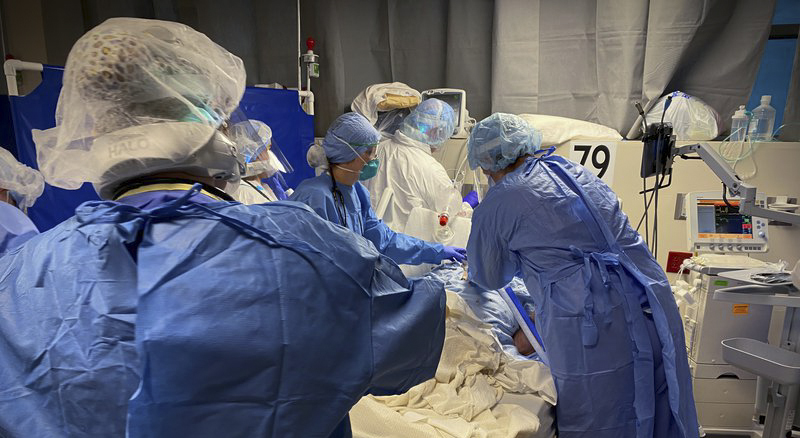
‘We fought so hard for a life’
Every critical care nurse has had their version of Garcia’s worst day, she said. It’s an experience she expects people outside of the hospital still don’t understand.
“Because it’s more than just those lives ending; it’s the families’ grieving,” she said. “That you’re dealing with six families grieving that day, and the emotions of all of that. And then again, knowing that we fought so hard for a life and that we have still lost, there’s that injury, that emotional injury.”
To cope with the emotional toll, Garcia said, she spends time with her husband, and also alone. She started seeing a therapist.
Dykes has seen a therapist as well. He said the sessions help him weigh the potential personal toll of taking on another overtime shift versus the tax on his nursing colleagues as a group if they’re stretched thin by a staffing shortage.
On the days he is scheduled to work in the COVID-19 unit, Dykes begins his shift with a deep breath, and starts to think practically. Which is to say, he drinks all of the iced coffee he brought with him. Otherwise, it will surely water all the way down in the hours before he sees it again. He also swigs cups of water, because he knows that the full-body protective gear he must wear during the shift will double as a sauna suit and because he must put on a whole new set of gear if he takes a water break.
“I'm very glad that we're as heavily protected as we are,” Dykes said. “I, to this day, haven't had COVID, I think. because of the precautions that we take. But, I mean, it's a plastic-covered bunny suit. Covers on your shoes, two pairs of gloves, and either a really tight mask or a respirator. Hair covers. And you're in that the whole time. You wear that the entire time that you're caring for these people, running around doing who knows what. So it gets very hot and you can't eat or drink while you're there, so you have to remove all of that to take a break. And then you'd have to put it all back on whenever you are going to go back to care for your patients.”
When patients are admitted to the emergency room with issues stemming from a COVID-19 infection, Dykes said, they tend to present similarly. They have shortness of breath, or fatigue, or sometimes gastrointestinal symptoms. By the time they arrive in the ICU, he said, “they usually look very, very ill.”
But they can still talk to their families and to their medical team. They can eat, but often, Dykes said, they’re working so hard to breathe that they lose their appetites. It soon becomes more patient-specific about who does OK and who does worse, he said.
As oxygen levels in the blood decrease, Dykes said, “you become more and more confused, so sometimes it's a little bit scary because they feel like they can't breathe.” With equipment and encouragement, nurses try to help them draw one more breath after another.
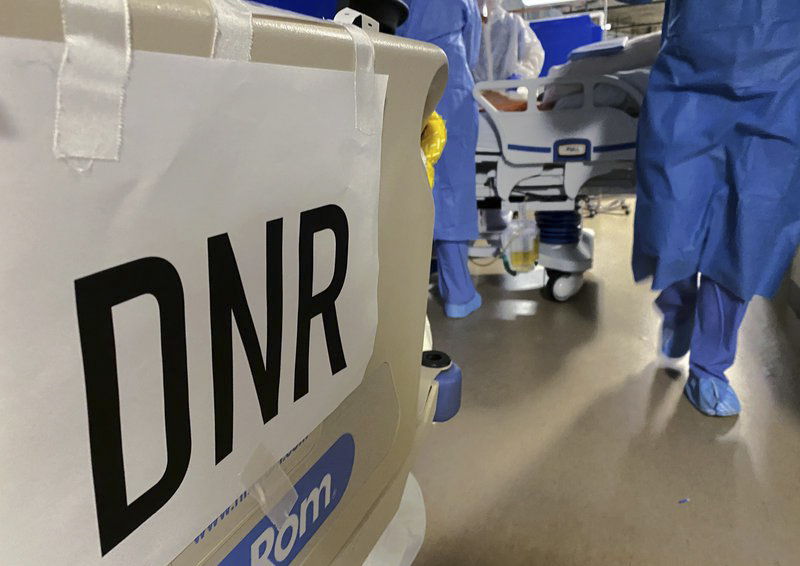
Once, Dykes sat bedside with a patient for nine hours. The battery in the respirator mask he wore died, and while it still functioned like an N95 mask, Dykes had to wear the bulky, silicone device for hours.
“If you do (leave), they will suffer cardiac arrest or something (catastrophic),” he said, his voice trailing off, before adding: “You can't leave.”
The gear stayed on. By the end of the nine hours, the patient’s medical team determined he would need even more intensive care, in Kansas City. Dykes said he started the patient on a collection of vasoactive medications to stabilize his blood pressure in an effort to begin the process of moving him, gently, from his ICU bed to a stretcher to an ambulance — all while the patient lay prone on his stomach.
“I had to chemically paralyze him to keep him as sedated as possible, because if you touched him, his heart rate would drop,” he said. “His oxygen would drop. You couldn't reposition him. And I had a physician at the bedside help me transfer him onto the gurney to transport him because I was so afraid it wasn't going to go well. After that, I don't know what happened to him.”
The level of attention necessary to keep a critical COVID-19 patient stabilized, to keep the person breathing, he said, is immense.
“You trained for that,” Dykes said. “You know you trained to know what to do in those situations. So it's just this constant flow of making interventions and communicating with physicians and other members of your team and trying to make adjustments and changes. I don't know. To me it's like another day at work, but ... you don't think about it in the moment. You just do what you have to do and you do what you're trained to do. It's exhausting. You're using your brain, you're critically thinking. And the other thing about nursing and critical care nursing is you have to be at least two steps ahead or you're four steps behind. You really have to anticipate what your intervention is going to do for these people and you know what you're going to do if it goes wrong or if the patient doesn't tolerate it.”
... They're not alone, but they're without the people that they love and without the people that they've shared their entire life with — and you try to give them every ounce that you can, but it's not the same and that's really the most tragic part.
Camron dykes
Along with the attention to care, there is the added responsibility to be the patient’s conduit to family, friends and supporters who can’t be in the room. He sets up video chat apps or turns on speaker phones to try to help them connect.
“But, it's still terrible because they're not alone, but they're without the people that they love and without the people that they've shared their entire life with,” he said. “You try to give them every ounce that you can, but it's not the same and that's really the most tragic part.
“I've sat in rooms, personally, and helped to transition people from this world into the next, whatever that is for them, because their family wasn't able to be there for them.”
He often works 60 hours or more a week, he said.
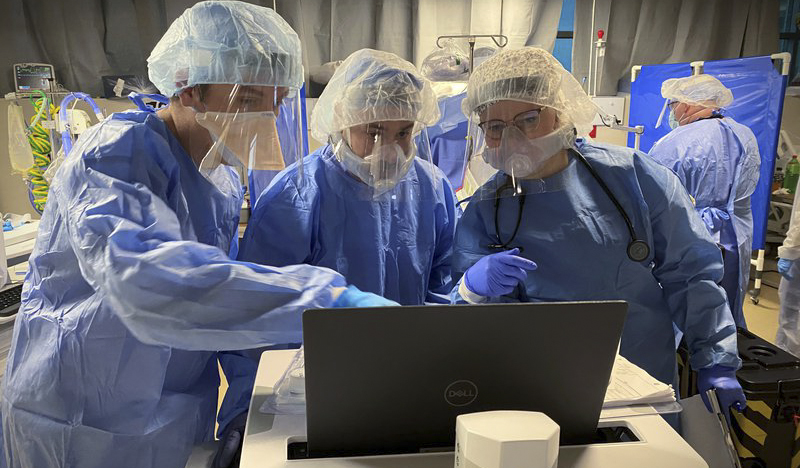
Vaccination status affects expectations for outcomes
Sometimes, before a patient transfers from the ER, a physician who has seen them will note their vaccination status. So oftentimes, the nurses know before the patient makes it to the COVID-19 unit. If not, they learn that information shortly after arrival.
When the nurses learn — yes or no — a set of internal calculations begin.
“It doesn't change the care I provide, but usually when I hear that they're unvaccinated, my expectation is that they're going to do worse and that we might not be able to save them,” Garcia said. It’s an expectation based on experience after experience.
“I don't know how to describe it,” Dykes said. “It's almost this sense of, like, just deep sadness and almost like an impending doom situation, because you hope that this person will be different, but you recognize that statistically, likely, (it) will not be different for them because they're not vaccinated and that they're going to really struggle.”
When Dykes learns someone is vaccinated or vaccinated and boosted, he thanks them for doing what they could do to improve their chances. To the vaccinated patients who leave his care, he tells them, “It's unfortunate you ended up here, but I'm glad that this worked and I'm glad science worked for you and I'm glad you were able to leave.” To the unvaccinated who recover enough to leave critical care beds, he tells them they got lucky.
“We have had those few success stories where they do get to go home to their families,” Garcia said. “And it's hard sometimes. I struggled initially and through Delta to find the positive in the person that did get better because there were so many that didn't.”
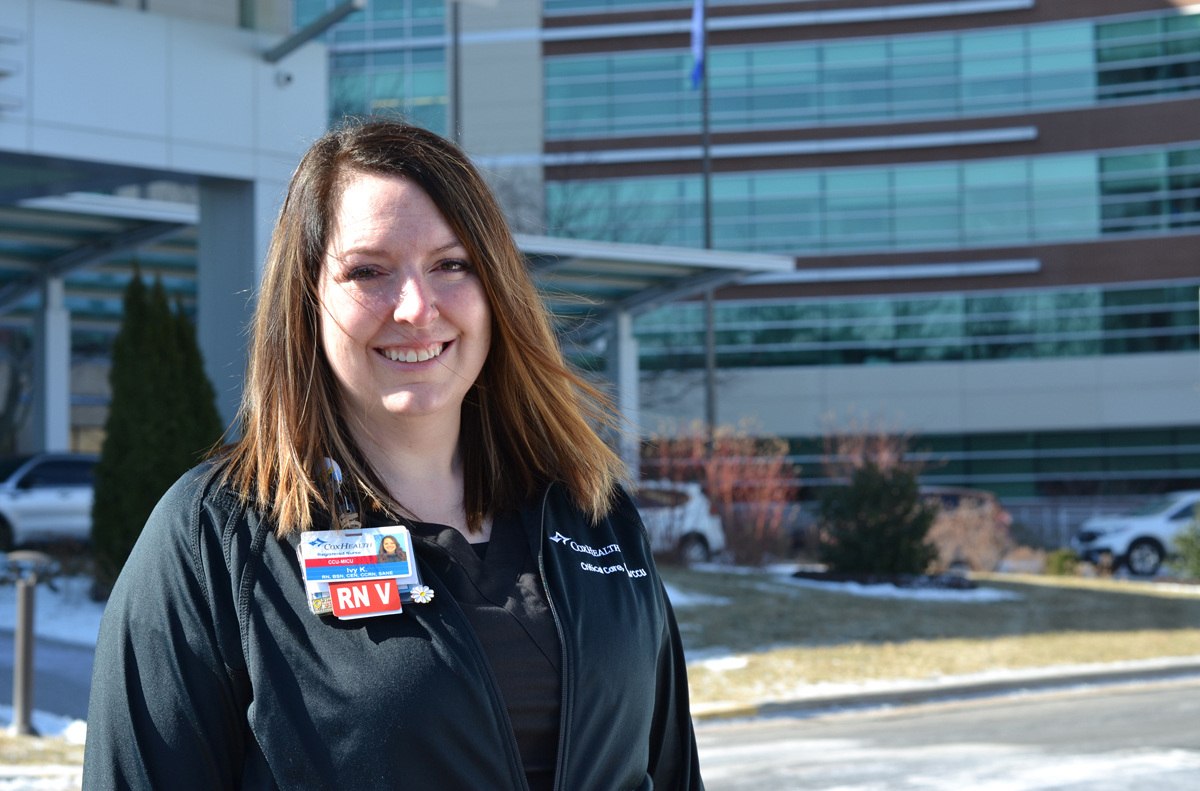
Outside the hospital, ‘There’s just a lot of avoidance’
One of Garcia’s neighbors brought her wine during the pandemic, a token of appreciation for her work on the front lines. But most people who know her, and know what she does, steer clear of COVID-19 conversations. Partially, that’s due to her shielding her family from what she experiences in the unit. But oftentimes, the subject doesn’t get brought up in the first place.
“For me personally, honestly, I don't feel like a lot of people ask,” she said. “They know where I work. I have family that'll ask. They usually just ask very generic (questions), like, ‘What do the numbers look like?’ But actually wanting to know or understand what's going on? I don't feel like there has been a lot of that in my friend groups or in my family. I think there's just a lot of avoidance.”
Dykes said he’s been fortunate to have a group of friends who actively engage with him and ask meaningful questions about what he sees and experiences every day.
“But even within my own family, there are people that you know, I mention something about work being difficult and they're like, ‘Well, you signed up for this,'” he said. “Or, ‘Well, this is what you do as a health-care worker.' Then also the avoidance, like Garcia said. They will completely avoid asking or be very dismissive of the conversation if it comes up, which I just think is really interesting. I don't know. A little scary, too.”
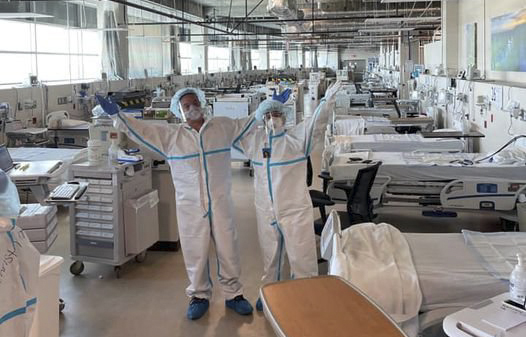
View of community ‘broken,’ confidence in nursing team ‘a huge positive’
When Garcia and Dykes spoke to the Daily Citizen on Feb. 16, the Omicron surge was waning. The number of patients in intensive care had dropped to about a dozen by mid-February.
“It's not a huge decrease compared to the decrease in the community,” Dykes said. “But some of that too is, as numbers go down in the community, we take care of these patients for so long.”
When people get hospitalized due to COVID-19 infections, Dykes said, they sometimes spend months in the hospital. So even when case numbers decrease in the community, as they are now, the number of empty hospital COVID unit beds tends to lag behind.
So while many outside the tower see this time as a return to normal, Dykes continues to wince when he goes grocery shopping at Target.
“Everyone's without a mask, and it's a little bit frustrating because I'm just like, well, this is never going to end until we all as a whole do something more collective to try to stop this,” he said.
In an effort to stop the spread of the virus, and also to avoid risking contact with people who aren’t vaccinated, Dykes doesn’t spend much time out in the world when he is not working.
“Lots of DoorDash,” Dykes said. “I order to my house a lot.”
“And work,” Garcia added.
She too has limited her activities in the community, and altered her opinion of it.
“My view of the community is broken compared to what it was prior to this because ... it's multifactorial,” she said. “Just a lack of support, a lack of wanting to come together to find a solution so that we can get out of this situation. And then like Camron said, it's hard when we're still walking into it every day at work and picking up extra shifts and walking into the devastation of this virus to see people who are walking around like things are, you know, quote-unquote, normal.”
While the pandemic response has left them often feeling further apart from many in Springfield, Garcia and Dykes said they’ve never felt closer with their co-workers.
“I think that we've cared for such sick patients the last two years that pretty much most of the people in our ICU, I trust to take care of pretty much every patient. Because they have been so sick and you're managing two patients that sick. My confidence in our team, and their ability to adapt and learn, and their proactiveness, I think has been a huge positive from all of this.”
Dykes agreed.
“You seek out people with similar experiences and life journeys as you, and so we really lean on each other,” Dykes said. “Working with Garcia, I know that I can rely on her to have my back and to do what I need to do and to help me do that every day. And spending time with those people outside of work safely and socially distanced, is really nice. And so it's good to be able to share that experience with people.”
What you can do
“Please, please take it into your own hands,” and get vaccinated if you have not yet done so, said critical care nurse Camron Dykes. Health-care professionals have seen far fewer unvaccinated patients survive once they have been hospitalized due to COVID-19 infections. As of Feb. 24, about 48% of eligible Greene County residents remained unvaccinated.
Dykes and critical care nurse Ivy Garcia asked that all Springfield residents work collectively to end the pandemic: mask, vaccinate and get boosted.
Vaccine clinic information in area
The Springfield-Greene County Health Department, as well as both major hospital systems, have permanent vaccine clinics located in the city. Several recently announced relocations.
- Starting March 2, the Mercy Hospital clinic will open at its new address, 3231 S. National Ave., Suite 150.
- Vaccinations at CoxHealth system locations can be scheduled online.
- The health department recently moved its vaccination and testing operations to the Westside Public Health Center, 660 S. Scenic Ave.
To find other clinic options across the county, visit the health department’s vaccination map on its website.
Unvaccinated account for most of the 721 COVID-19 deaths in Greene County
Of the 721 who have died from COVID-19 in Greene County since the start of the pandemic nearly two years ago, 647 have been unvaccinated, including 300 who died before the vaccine became available in early 2021.
Here are statistics provided by the Springfield-Greene County Health Department as of Feb. 25.
- Total deaths: 721
- Unvaccinated, after vaccine became available: 347 deaths
- Unvaccinated before vaccine was available: 300 deaths
- Partially vaccinated: 30 deaths
- Fully vaccinated, no booster after it was available: 24 deaths
- Fully vaccinated before booster was available: 16 deaths
- Fully vaccinated and boosted: 4 deaths
*Editor’s note: Kaitlyn McConnell left her post at CoxHealth earlier this year to devote herself full time to Ozarks Alive, a cultural preservation project about the region’s people and places. Through a partnership agreement, she shares her stories with readers of the Hauxeda.




